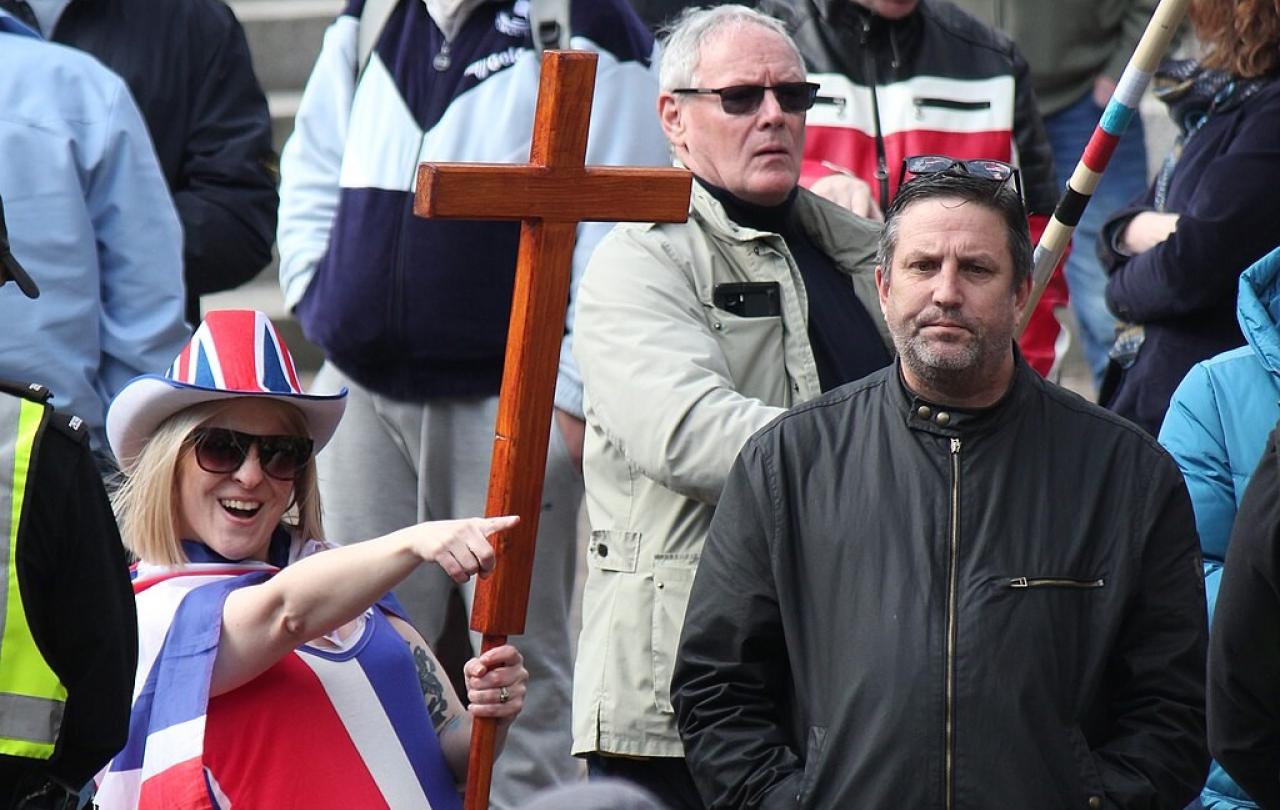
Last weekend I was at Reading Festival which has become a rite of passage for teenagers from across the UK. Over 105,000 young people turn up to the festival for a weekend of music and mayhem. The typical guest has just received their GCSE results, and heads for Reading, or its twin festival in Leeds, to reflect on what they are going to do next. Headliners this year included artists such as Lana Del Rey, Raye, Prodigy, Beadobee and Liam Gallagher.
My role at the Festival was as a volunteer with Reading Street Pastors who offer a 24-hour safe, warm and dry space. They provide a vital service for these young people, many of whom find their first festival experience very overwhelming. Volunteers serve a ‘Mountain’ of hot chocolate, loaded with cream and marshmallows, or ‘Liquid Death’ – a rebranded aluminium recyclable can of water - along with a friendly face or a listening ear.
I got to spend time over the weekend with hundreds of teenagers who were prepared to spend hours in the safe space because their tents had collapsed, or they had forgotten to bring anything warm to wear, or their phone batteries were dead or because their friends had ditched them. I found our open-ended conversations insightful, and offered me the opportunity to learn a lot about the upcoming generation. Here are some of my observations:
1. They're brilliant
Too often, young people are written off as being uncommunicative, narcissistic, or addicted to social media, but given the chance, they are excellent conversationalists. I thoroughly enjoyed their company; they asked great questions, shared big ideas and offered honest, if surprising, opinions. It was actually a pleasure to spend time with them and I totally recommend it – even, or especially, at 6am in the morning.
2. They appreciate their parents
Of course, most of them wouldn’t tell their parents this, but to me, a total stranger, it appeared that they recognized and appreciated the influence of their parents. This was evident not only in those young people who were missing home and home comforts, but even in their music tastes. The band The Prodigy, who performed on the first night, stem from my era of music, and encompass dance, house, and rave culture. I heard many young people claim they were listening to them, or Liam Gallagher from Oasis, because “my mum/dad love them”. Music is quite a connecting point between generations, it turns out.
3. There’s a diverse range of political engagement
There was a wide range of understanding and interest in politics among these young people. I spoke to many who didn't seem to care about politics, feeling that politicians don't care about them and questioning why they should bother if they can't make a difference. However, I also met many politically connected and aware individuals, some of whom were aspiring to study at universities like Durham, Oxford, or Cambridge. These engaged youths expressed frustration, feeling let down by the political system and believing that politicians don't have their best interests at heart. They were aware of issues like tax increases and broken promises by political parties and expressed a sense of distrust and disillusionment. This disengagement is a significant problem, as it leaves young people vulnerable to populism. Some mentioned that in school elections, more right-wing parties were gaining attention because they seemed to take young people seriously, which I found fascinating and concerning.
4. There’s a lack of hope
I noticed many of the young people I spoke to didn't have a lot of hope for the future. Their huge outlay of £350+ on the weekend appeared to be evidence: many of them expressed resignation that they would never be able to own a house, or were worried about the escalation of global events such as the conflict in the Middle East and Ukraine. While social media is often blamed for creating anxiety in this generation, it seems that global events and mainstream media also play significant roles in shaping their perceptions and values.
Mental health and especially male mental health seem to have turned a corner.
5. There are conflicting views on the environment
Despite numerous advertisements and incentives for people to clean up after themselves at the festival, it was clear that there were two sorts of campers. While some picked up their own litter – and that of those around them, others had no intention of even taking their tent home at the end. Every year after the Reading festival, the site looks like a disaster zone, as if a hurricane has blown through, the aerial shots released of the aftermath remind me of the movie Twisters. Another wave of volunteers comes in to help clear away the debris. However, I heard one young person say: "My mum and dad didn't raise me to live this way." Young people are not a monolithic group, and we shouldn't expect them to be. We can’t tar them all with the same brush. Some may not care about the mess they leave behind them, but others really do.
6. Queueing is dying
Maybe it has always been this way, and I am just getting too old for it but it seems nobody respects my tactic of getting to the front to see the big-name band by arriving at the venue early, waiting for the barrier gates to open and then picking your spot and waiting. At Reading Festival, I’ve learned that about 5 minutes before the band comes on, there’s a sudden surge of people who snake their way through the crowd claiming to be ‘just finding their friends’. I didn’t see any great reunifications. What I saw was disrespect of the good old British value of queuing. The problem is I’m too old to remember whether I did that as a teenager too.
7. Faith is not embarrassing
The safe space run by the Reading Street Pastors was busy. Maybe it was due to the torrential downpour that left many tents uninhabitable, but I remember it being the same last year. The young people seemed to appreciate not only the company, hot chocolate and warm blanket, but also the opportunity to chat. Volunteers offer their help to all without distinction, whatever faith background they are from. But faith often came up in conversation. I heard: “Why do you run this tent?” “Why are you volunteering here?” “Are you guys religious?” “What does it mean to be a Christian?” “What are the best bits of the Bible to read when you are feeling lonely?” “What does the Bible say about drugs?” “Can you help me with the religion and ethics questions for my A-level Philosophy coursework?” Overall, faith was discussed openly, as something interesting and positive.
8. Mental health issues are losing their stigma
At 6.30am a huge security guard walked into our safe space and during the long conversation that ensued, what struck me was his openness about his mental health and anxiety. There was no stigma, no shame, in talking to me, a stranger, about his struggles. He was not the only one to be open about his mental health issues and it felt like a very healthy development in our society. Mental health and especially male mental health seem to have turned a corner.
9. Teenagers need to learn survival skills
Shivering in our safe space at 6.05 in the morning was a lad who had come to the Reading Festival with only his t-shirt and jeans. He didn’t even think he might need a coat, let alone a waterproof tent. At the other end of the space was a lad with a full-on Calor-gas stove, whipping up some nourishing pasta-based meals for his friends. It was clear to see which of the two 16-year-olds had done the Duke of Edinburgh scheme. The expedition training and experience has given him survival skills for life.
10. Music is a grand uniter
In my day, music fans would be glued to their television screens on a Thursday night as we waited to hear who had the number one single of the week. That hour of the week was part of our shared cultural identity and everyone was talking about it at school the next day. Nowadays, Youtube, Spotify and the other infinite ways to access music has taken away the grand unifying cultural portal that was Top Of The Pops. Yet, somehow, they provide young people with diploma-level knowledge in popular music through the decades. They all know not only the breakthrough artists and latest hits, but lyrics to everything from Sabrina Carpenter and Lana Del Ray to Oasis. On a warm summer’s evening, with the sun setting there’s something very beautiful about a crowd of 70,000 people singing songs together.





